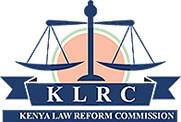Tribunals in Kenya
It is generally agreed that in most Commonwealth states the growth of Tribunals has not occurred in accordance “with any great theory of administration”. Instead, tribunals have grown and continue to grow on ad hoc basis, to deal with specific problems in an area attracting regulation.
In Kenya the development of Tribunals has not been any different. Our Tribunals are set up on statute by statute basis without any common characteristics. On a conservative estimate, there are probably more than sixty Tribunals in existence in Kenya today.
An examination of some of these Tribunals discloses startling differences and variations. To begin with the nomenclature is inconsistent and compounding. Some are called “Tribunals” others “Boards” , others “Commissions” others “Committees” others “Authorities” others “Bureaus” others “Councils” , etc. This inconsistency in names is not a mere aberration; it mirrors greater inconsistencies in more fundamental issues touching on Tribunals which would otherwise demand standardization and consistency.
The Tribunals are all set up by different statutes . They are appointed and constituted differently. Some members of the same Tribunal are appointed by the President and the rest by the Minister . In other Tribunals, all the members are appointed by the Minister . The Minister appoints some members at his own discretion, others on the “advice” of, “consultation” with, or “nomination” by specified institutions. In yet other Tribunals the appointment is by different authorities such as the Chief Justice . Some members of Tribunals are elected by specified organisations or sectors . Members of different Tribunals enjoy different remuneration and terms of office. Members of some enjoy a measure of independence and security of tenure whist others serve at the pleasure and discretion of the Minister .
All these Tribunals exercise different powers. They operate on different procedural rules. Parties before some are allowed representation by Advocates whilst others are not. The decisions of some are final whilst those of others are appealable either to the Minister , to other Tribunals , to subordinate courts or to the High Court . Even in those Tribunals where appeals are allowed to the High Court, some are allowed only on questions of law , others on both questions of law and fact. In some Tribunals, the decision of the High Court on appeal is final whilst in others further appeals to the Court of Appeal are allowed . The right of appeal is exercisable within different periods, some within 14 days , others within 28 days , others within 30 days , others within 60 days and others within 90 days.
Amidst all this confused jungle of variations, we cannot possibly talk of equal justice before Tribunals, when some Tribunals operate as part of Government ministries and departments whilst others operate as independent quasi-judicial bodies, when some litigants have the advantage of counsel whilst other do not, when litigants before some Tribunals have the advantage of audience in an appellate Court, whilst others do not. It is time we considered standard procedures and practices before Tribunals as is happening in some Commonwealth jurisdiction.
